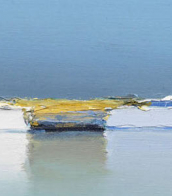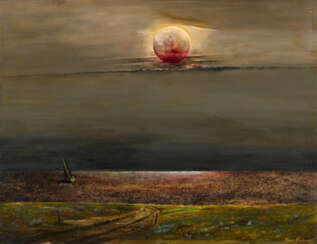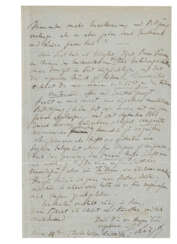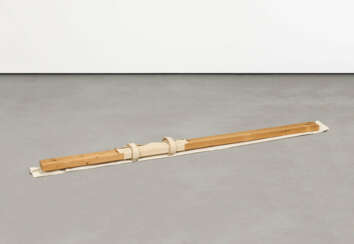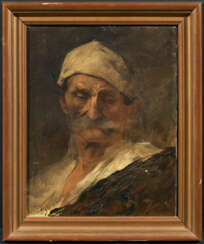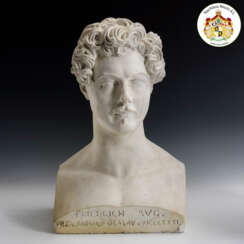franz wüsten

Franz Radziwill was a German artist of the twentieth century. He is known as a landscape painter, graphic artist and printmaker associated with the artistic movement of "new materiality".
Franz Radziwill created paintings that are characterized by careful elaboration and the use of glaze techniques borrowed from the Old Masters. He used elements of industrial buildings and modern technology, including ships and airplanes, in his landscapes. The results of his work can be categorized as magical realism.
In 1933 Radziwill became professor of painting at the Düsseldorf Academy of Art, but in 1935 the Nazis stripped him of this position, declaring his work degenerate art.


Franz Seraph Lenbach was a German painter known primarily for his portraits of prominent personalities from the nobility, the arts, and industry. Because of his standing in society, he was often referred to as the "Malerfürst" (Painter Prince).




Franz Radziwill was a German artist of the twentieth century. He is known as a landscape painter, graphic artist and printmaker associated with the artistic movement of "new materiality".
Franz Radziwill created paintings that are characterized by careful elaboration and the use of glaze techniques borrowed from the Old Masters. He used elements of industrial buildings and modern technology, including ships and airplanes, in his landscapes. The results of his work can be categorized as magical realism.
In 1933 Radziwill became professor of painting at the Düsseldorf Academy of Art, but in 1935 the Nazis stripped him of this position, declaring his work degenerate art.


Franz Werner von Tamm, known as Dapper, was a German Baroque painter. One of the most famous masters of German still life in the late 17th and early 18th centuries.
Franz Werner von Tamm studied painting in Italy in the studio of Carlo Maratta. In 1701 he was invited to Vienna as court painter to Emperor Leopold I, where he remained until his death.
He painted with a soft brush live and dead poultry as well as flowers and animals, rather decoratively with an immediate mood.


Franz von Stuck was a German painter, sculptor, printmaker, and architect. Stuck was best known for his paintings of ancient mythology, receiving substantial critical acclaim with The Sin in 1892.


Franz von Stuck was a German painter, sculptor, printmaker, and architect. Stuck was best known for his paintings of ancient mythology, receiving substantial critical acclaim with The Sin in 1892.


Franz Seraph Lenbach was a German painter known primarily for his portraits of prominent personalities from the nobility, the arts, and industry. Because of his standing in society, he was often referred to as the "Malerfürst" (Painter Prince).


Franz von Stuck was a German painter, sculptor, printmaker, and architect. Stuck was best known for his paintings of ancient mythology, receiving substantial critical acclaim with The Sin in 1892.


Franz Heckendorf was a German painter and graphic artist who was particularly successful during the Weimar Republic. During the National Socialist era, he was sentenced to ten years in prison after helping Berlin Jews threatened with deportation to extermination camps to escape to Switzerland.


Franz von Stuck was a German painter, sculptor, printmaker, and architect. Stuck was best known for his paintings of ancient mythology, receiving substantial critical acclaim with The Sin in 1892.


Franz Xafer Gräßel was a German animal and landscape painter.
Gräßel studied painting at the Karlsruhe Academy and at the Munich Academy, where he became a professor in 1911. Initially his favorite subject was rural landscapes, but from 1894 he painted mainly ducks and geese and achieved a high level of skill in their depiction. Gräßel even earned the nickname "duck painter".
In 1932 Gräßel joined the NSDAP, and in 1938, 1939 and 1940 was represented by four paintings at the Great Exhibition of German Art in Munich. Adolf Hitler liked them so much that he purchased them all. The artist's paintings are now in important galleries and collections in Germany.




Franz Nölken was a German painter of the early twentieth century. He is known as a painter and a member of the Bridge art group, which became the founder of German Expressionism.
Franz Nölken, mastering a variety of techniques including oil, pastel and watercolor, excelled in portrait painting, as well as creating landscapes and still lifes. His work is characterized by virtuoso drawing and a desire to simplify his pictorial media. Conscripted during World War I, Nölken died in northern France just before the end of the war. He left an important mark on the history of Expressionism.


Friedrich Franz Maria Stummel was a German religious artist, associated with the Nazarene movement and the Düsseldorfer Malerschule. In addition to his own paintings, he created designs that were employed by numerous glass painters, sculptors, and weavers.


Franz Anton Zeiller was an Austrian artist who worked in the Rococo style. He did church paintings and frescoes.


Franz Nölken was a German painter of the early twentieth century. He is known as a painter and a member of the Bridge art group, which became the founder of German Expressionism.
Franz Nölken, mastering a variety of techniques including oil, pastel and watercolor, excelled in portrait painting, as well as creating landscapes and still lifes. His work is characterized by virtuoso drawing and a desire to simplify his pictorial media. Conscripted during World War I, Nölken died in northern France just before the end of the war. He left an important mark on the history of Expressionism.


Franz Xafer Gräßel was a German animal and landscape painter.
Gräßel studied painting at the Karlsruhe Academy and at the Munich Academy, where he became a professor in 1911. Initially his favorite subject was rural landscapes, but from 1894 he painted mainly ducks and geese and achieved a high level of skill in their depiction. Gräßel even earned the nickname "duck painter".
In 1932 Gräßel joined the NSDAP, and in 1938, 1939 and 1940 was represented by four paintings at the Great Exhibition of German Art in Munich. Adolf Hitler liked them so much that he purchased them all. The artist's paintings are now in important galleries and collections in Germany.


Franz Xafer Gräßel was a German animal and landscape painter.
Gräßel studied painting at the Karlsruhe Academy and at the Munich Academy, where he became a professor in 1911. Initially his favorite subject was rural landscapes, but from 1894 he painted mainly ducks and geese and achieved a high level of skill in their depiction. Gräßel even earned the nickname "duck painter".
In 1932 Gräßel joined the NSDAP, and in 1938, 1939 and 1940 was represented by four paintings at the Great Exhibition of German Art in Munich. Adolf Hitler liked them so much that he purchased them all. The artist's paintings are now in important galleries and collections in Germany.


Franz Nölken was a German painter of the early twentieth century. He is known as a painter and a member of the Bridge art group, which became the founder of German Expressionism.
Franz Nölken, mastering a variety of techniques including oil, pastel and watercolor, excelled in portrait painting, as well as creating landscapes and still lifes. His work is characterized by virtuoso drawing and a desire to simplify his pictorial media. Conscripted during World War I, Nölken died in northern France just before the end of the war. He left an important mark on the history of Expressionism.


Franz Erhard Walther is a German artist (sculptor, conceptual, installation and process artist).


Franz von Stuck was a German painter, sculptor, printmaker, and architect. Stuck was best known for his paintings of ancient mythology, receiving substantial critical acclaim with The Sin in 1892.


Franz Heckendorf was a German painter and graphic artist who was particularly successful during the Weimar Republic. During the National Socialist era, he was sentenced to ten years in prison after helping Berlin Jews threatened with deportation to extermination camps to escape to Switzerland.


Franz Nölken was a German painter of the early twentieth century. He is known as a painter and a member of the Bridge art group, which became the founder of German Expressionism.
Franz Nölken, mastering a variety of techniques including oil, pastel and watercolor, excelled in portrait painting, as well as creating landscapes and still lifes. His work is characterized by virtuoso drawing and a desire to simplify his pictorial media. Conscripted during World War I, Nölken died in northern France just before the end of the war. He left an important mark on the history of Expressionism.


Franz von Stuck was a German painter, sculptor, printmaker, and architect. Stuck was best known for his paintings of ancient mythology, receiving substantial critical acclaim with The Sin in 1892.










